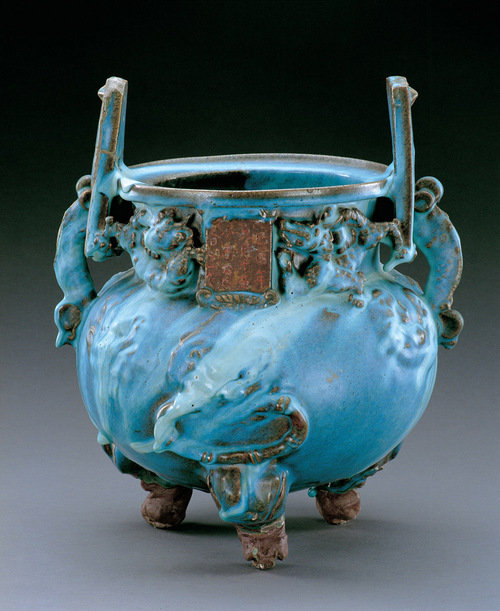The Silk Road in Inner Mongolia
dal 14/2/2007 al 12/5/2007
Segnalato da
University Museum and Art Gallery
14/2/2007
The Silk Road in Inner Mongolia
University Museum and Art Gallery - UMAG, Hong Kong
Eighty extraordinary artefacts dating from the Tang (618-907) to the Yuan (1271-1368) dynasties, including porcelain, glass, gold and silver wares, harnesses and Nestorian Christian items will be on view.

Eighty artefacts dating from the Tang (618-907) to the Yuan (1271-1368) dynasties
The University Museum and Art Gallery of The University of Hong Kong and the
Inner Mongolia Autonomous Region Museum are pleased to present the
exhibition "The Silk Road in Inner Mongolia" in which eighty extraordinary
artefacts dating from the Tang (618-907) to the Yuan (1271-1368) dynasties,
including porcelain, glass, gold and silver wares, harnesses and Nestorian
Christian items will be on view.
The steppes in northern China have always been home to nomads. From the
third century BC onwards, the steppes were dominated by the nomadic tribes
of the Xiongnu, Xianbei, Turks, and Qidan respectively. They were, however,
eventually conquered by Genghis Khan by 1206. In 1271, Kublai Khan, grandson
of Genghis, became ruler of the empire and adopted the new Chinese dynastic
name of "Yuan". For millennia, the steppes nomads traded with people to the
west and those who lived on China¡¦s central plains, establishing the
"Steppe Silk Road". This paved the way for extensive cultural exchanges
between East and West.
The Steppe Silk Road is generally used to mean the road crossing the
Eurasian steppes which began in Central Asia and eastern Europe in the west,
reaching Mongolia and Siberia in the north to the central plains in the
south. Around the first century, the northern Xiongnu migrated to the west
and this marked the beginnings of the Steppe Silk Road. In the early sixth
century, the Turks established the Turkic empire (552-745) and opened up a
trade route to Rome. Tight contacts were established between the Turks and
Persia, Sogdia and Byzantia. Exhibits include gold and silver Persian wares
and a gold Roman coin excavated from Inner Mongolia. During the Tang dynasty
(618-907), contact between East and West grew tremendously and Nestorian
Christianity was introduced to China in 635. In 845, when Emperor Wuzong
suppressed Buddhism, Nestorian Christianity also suffered almost
disappearing in the central plains. During the Yuan dynasty, Nestorian
Christianity experienced a revival. A Nestorian Christian porcelain plaque
included in the exhibition, dating to the Mongolian Khanate period, is the
only Nestorian plaque made of porcelain known. Towards the end of the Tang
dynasty, the Qidan grew in power and established the Liao dynasty
(916-1125). The production of ceramics flourished during the Liao dynasty
and representative wares such as cockscomb flasks, phoenix-head ewers and
Liao sancai can be viewed. The Mongols founded the Yuan dynasty (1271-1368)
and established a vast empire that stretched through Europe and Asia and
thus facilitated travel and trading. Trade became more efficient and less
dangerous through the northern and southern steppe routes, and along the
postal relay roads, which enhanced the cultural interaction between East and
West.
The Silk Road of China's northern steppes documents the rise and fall of
nomadic tribes, and the relationship, interaction and cultural influences
between these tribes and the West. Their arts are not only characterised by
their own cultural features, but also by blending the ideas and styles of
the West. This illustrates the cultural diversity and uniqueness of China.
The exhibition opening will take place at the Museum at 6:00 p.m. on
Wednesday 14 February. Dr. Annie Wong Leung Kit-wah, President of Annie Wong
Art Foundation, Mr. Wang Dafang, Head of Division of Cultural Relics, Inner
Mongolia Autonomous Region, and Professor C. F. Lee, Pro-Vice-Chancellor of
HKU will officiate at the ceremony.
University Museum and Art Gallery
University of Hong Kong - Hong Kong



